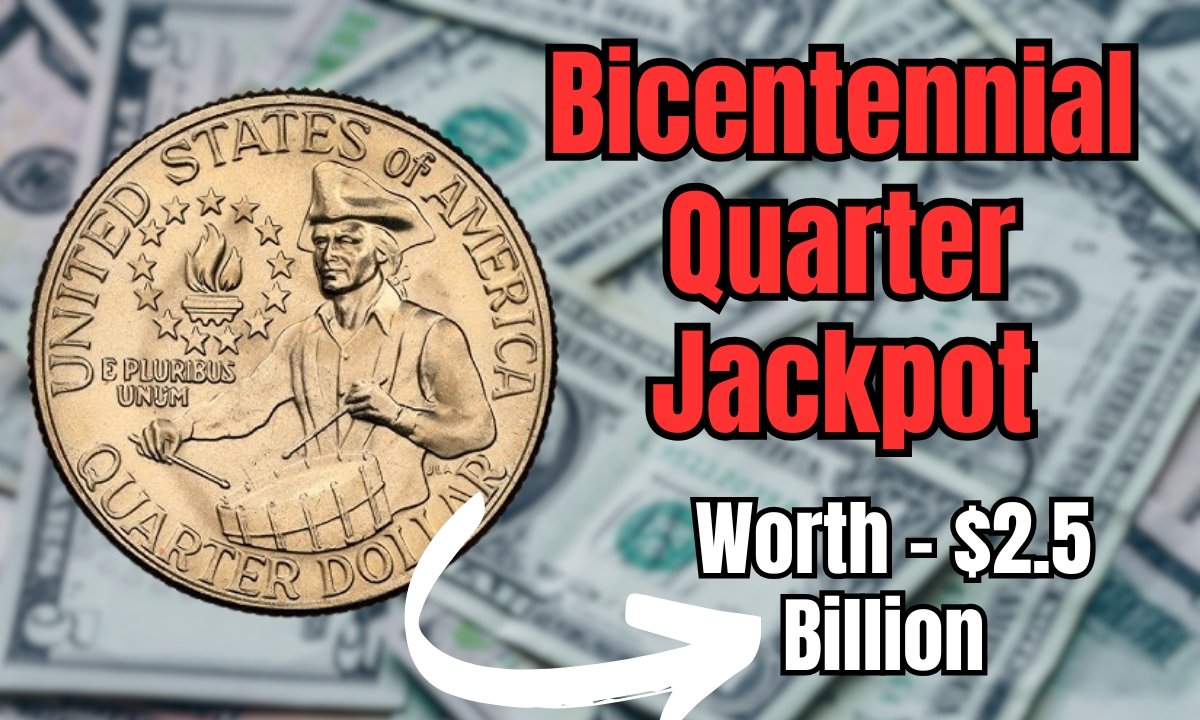The 1976 Bicentennial Quarter, created to honor America’s 200th anniversary, remains subject to collectors frenzy with rumors of a super-rare variant worth $2.5 billion. While these quarters can typically fetch just 25 cents, the occasional error and speculatively unique or special specimen might demand thousands or more. Let us delve into the background of this coin, what makes it special, and how to discover some money in your pocket!
A Coin Born Of Celebration
In 1975–1976, the U.S. Mint produced about 1.6 billion Bicentennial Quarters as part of bicentennial festivities. Featuring George Washington on the obverse and a colonial drummer with a torch and 13 stars on the reverse, the coins bore the dual date “1776–1976”. Designed by Jack L. Ahr, they replaced the usual eagle design that would have symbolized America’s creative spirit. Most were copper-nickel clad, though some San Francisco Mint coins of the period were 40 percent silver and were intended as collector’s issues.
The 2.5-Billion-Dollar Myth
The $2.5 billion Bicentennial Quarter emerged from speculation that an ultra-rare error coin was indeed struck in some precious metal such as gold or fine silver or so badly double-die minted among other drastic errors. No such coin has ever been authenticated or sold for a sum, let alone an amount in that range, and this figure has been dismissed by experts, including PCGS and ANA, as grossly exaggerated. Yet rare varieties such as a 1976-S Silver Proof that fetched $19,200 do testify that some quarters can carry a hefty price.
What Makes It Valuable
Some Bicentennial Quarters bring high prices because of:
- Mint Errors: Double die obverses, off center strikes, or coins struck on the wrong planchet (for example, a dime or silver) are worth anywhere from $500 to $12,000. In 2020, a double denomination on a dime sold for $9,200.
- Silver Content: 40 percent silver quarters, mostly from San Francisco (“S” mint mark), are worth $10 to $100 in circulated condition, but can sell for $500 and more as pristine proofs.
- Condition: Uncirculated MS-67 or finer coins, submitted and approved by PCGS or NGC, can go for $1,000 to $7,000. A $2.5-billion valuation probably originated from a series of viral myths, but the appeal of stumbling upon a rare error still haunts the collector.
How To Spot A Rare Quarter
To identify a Bicentennial Quarter of value:
- Date Check: The dates “1776–1976” should be visible.
- Edge Check: If the edge is <i>solid silver</i> (there is no copper stripe), then this may be a 40 percent silver coin.
- Mint Marks: “S” are rarer than strikes, unmarked is Philadelphia, and “D” is Denver.
- Errors: Use a magnifying glass to detect doubling of letters, misalignment, or weird colors in the outer metal.
- Weigh: Silver quarters weigh 6.25 grams, and that is heavier compared to the clad 5.67 grams.
Never clean coins, which reduces their value. Consider professional grading through PCGS or NGC for authentication.
Also Read: Kennedy Half Dollar Worth $5.9 Million: Rare Coin Still Found In Circulation

